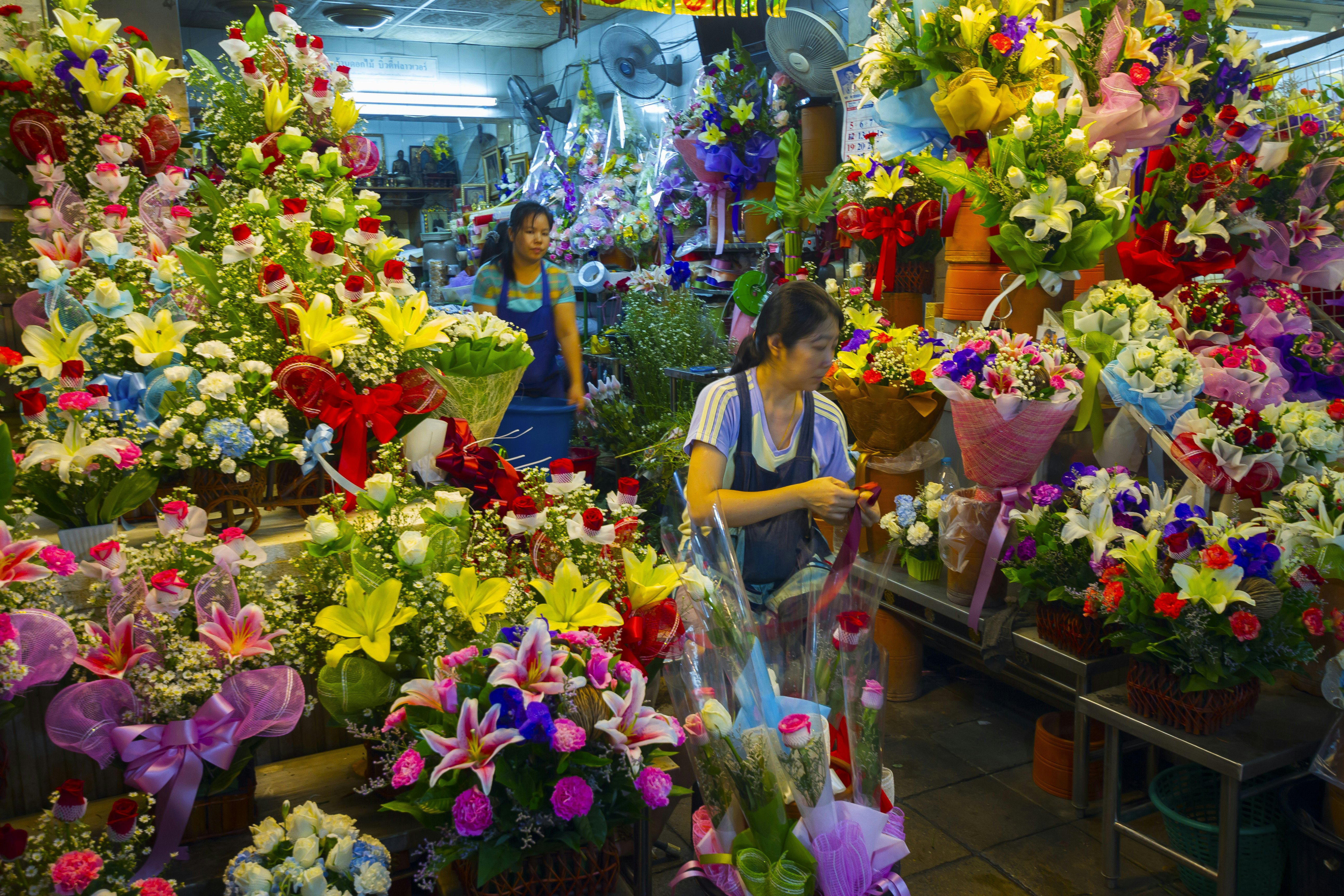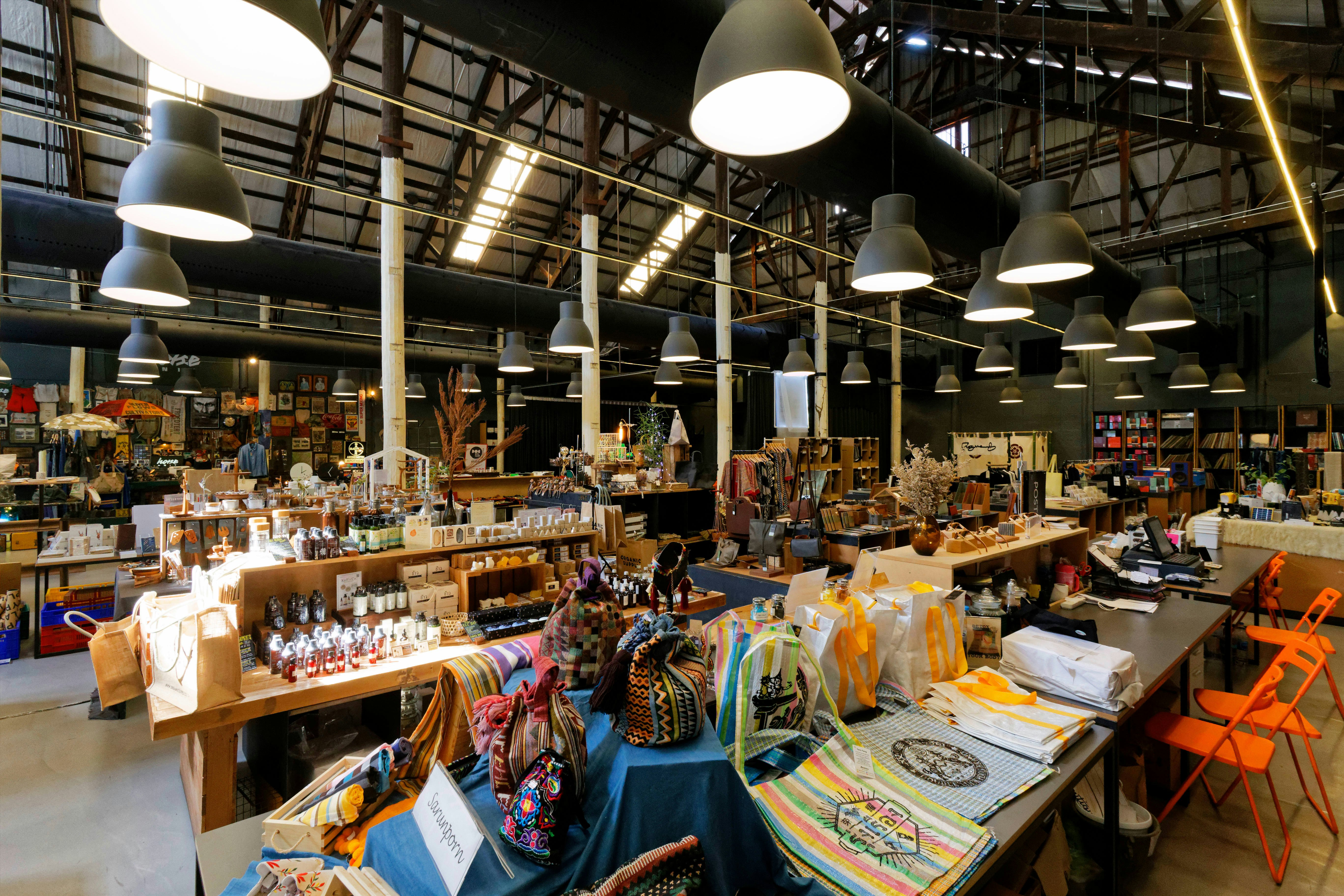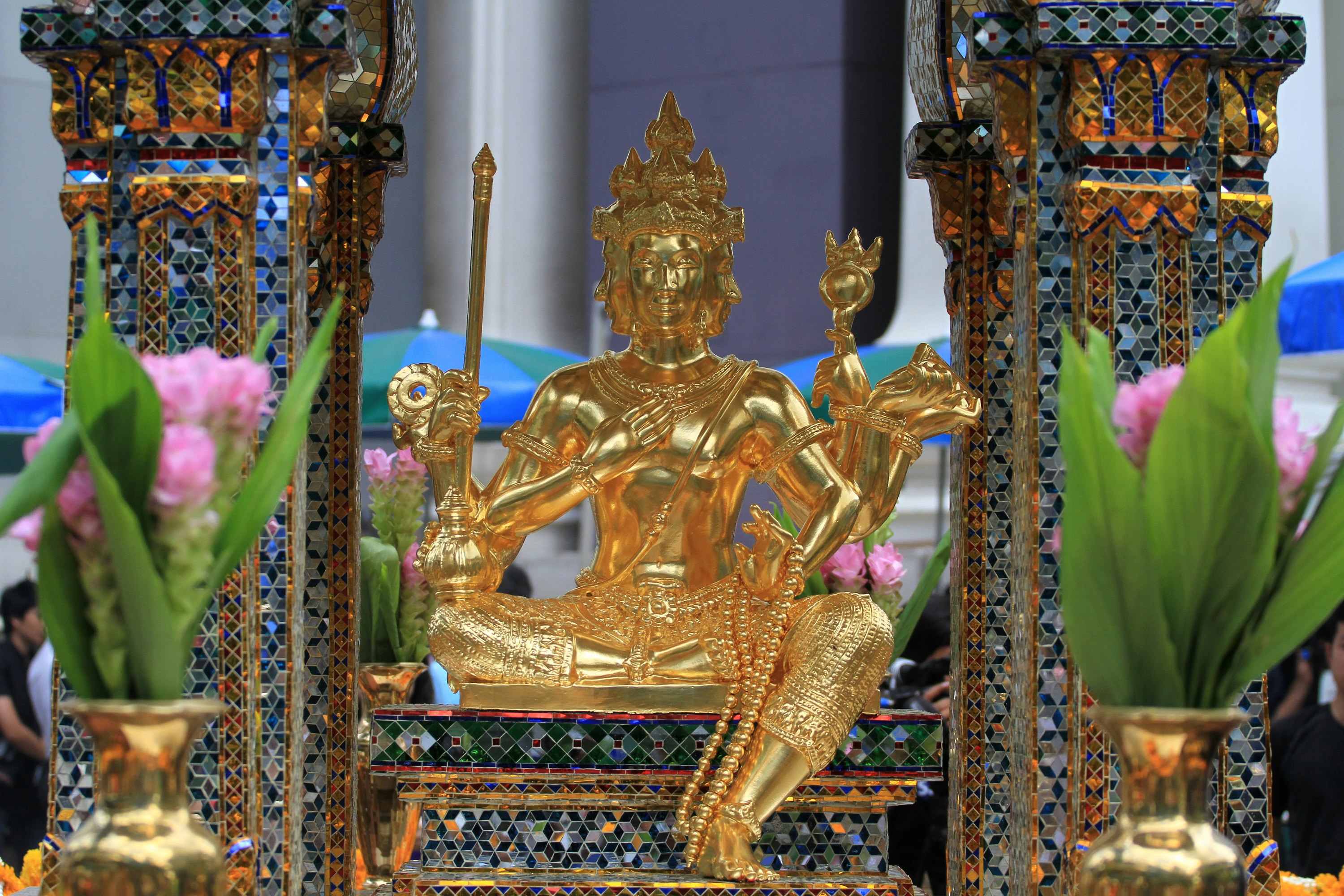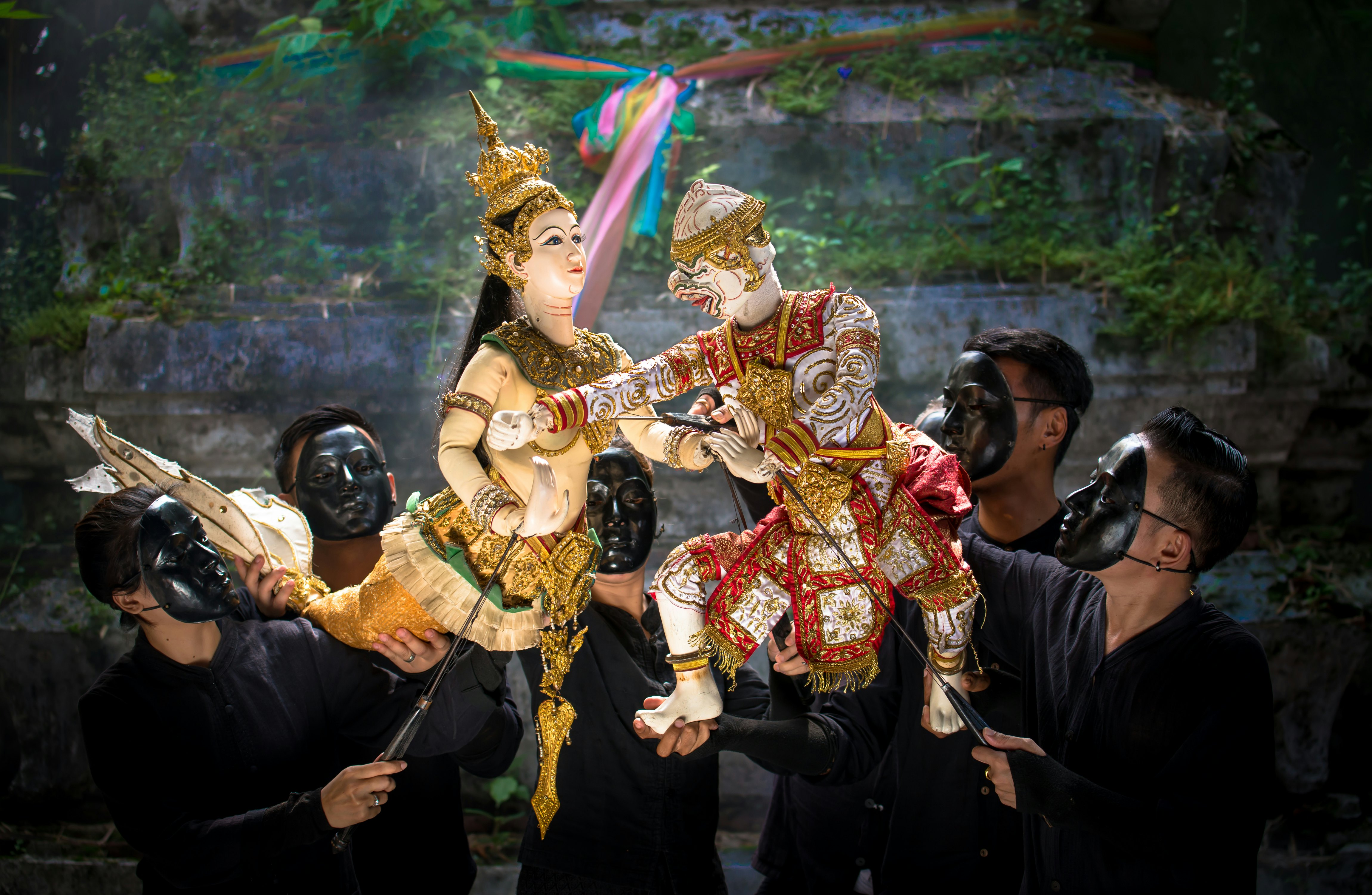
The 30 best countries, cities and regions to visit in 2025
Nov 6, 2024 • 13 min read

Bangkok is an endlessly fascinating city and there's an amazing amount to see for free. Kritsaroot Udkwae/Shutterstock
As one of the world's favorite budget travel playgrounds, Bangkok overflows with pocket-friendly experiences, and there's plenty to do in the Thai capital that won't cost you a baht, from trips to golden temples, captivating monasteries and vast open-air markets to people-watching on the world's most famous backpacker strip.
While some top sights have entry fees, including legendary Wat Pho and the Grand Palace, there are countless other religious and historic sites that you can visit for free. And with excellent public transport, even getting around won't eat up too many baht – exploring Bangkok on the public Chao Phraya Express Boat is one of the most pocket-friendly city tours on the planet.
Then there's the street food, which will have you eating like a king or queen whatever your budget. Whether you're here for the culture, the food or the big-city vibe, here are the best free things to do in Thailand's City of Angels – the literal translation of Bangkok's local name, Krung Thep.

One of the largest markets in the world, Chatuchak is an unforgettable Bangkok experience, even if you don’t plan on spending a cent. The market is free to visit, and you can see stalls piled high with everything from hippie fashions to palm-wood chopsticks and handmade steel cutlery, which has been embraced in Thailand since the 19th century following a decree by Rama IV.
It's a fascinating cultural education to see the goods that locals prioritize at the market's 15,000 or so stalls, from vintage trainers to special cooking vessels for Thai snacks and miniature food offerings for spirit houses. If you can't resist the urge to buy, prices for many items are extremely reasonable, and often negotiable.
Planning Tip: The full market operates from 9am to 6pm on Saturday and Sunday. Make a day of it, soaking up the atmosphere and pausing for snacks or drinks in one of the attached bars or food stalls.
Technically, many of the objects in this celebrated four-story antique store are for sale, but prices for the owner's collection of 19th- and 20th-century artifacts are so astronomically high that the collection never seems to diminish. Instead, view Papaya as a museum of recent nostalgia.
Every inch of this warehouse-size exhibition space is stuffed with art deco furniture, 1960s beer signs, superhero statues, Piaggio scooters, typewriters, movie projectors, love seats, TV sets, VHS players, wall clocks, storefront mannequins, lampshades – the list goes on and on. It's a great place to browse retro heirlooms without any pressure to buy.
Planning Tip: If you're visiting Papaya, it's worth swinging by nearby Wat Lat Phao on the Lat Phao canal, with its eclectic collection of standing and seated Buddhas.

You can even find fascinating free sights amidst the famous monuments on the royal island of Ko Ratanakosin. Close to the river near Wat Pho, the Amulet Market sees a lively trade in small but highly prized Buddhist talismans and votive objects. Potential buyers (many already sporting chains bedecked with amulets) can be seen bargaining and flipping through magazines dedicated to these objects of devotion, some of which command astronomical prices.
It's a great place to wander and watch as collectors peer through magnifying glasses at the tiny amulets, seeking hidden meaning and, if they’re lucky, hidden value. The market is close to Tha Phra Chan pier; the entry point to the market is marked "Trok Maha That."
Planning Tip: If you feel like buying an amulet, less valuable talismans can be picked up for as little as 10B and mounted into metal and plastic amulet cases for not much more.
Spread out over three wooden bungalows, the charming, free-to-visit Bangkokian Museum will whisk you back to the Bangkok of the 1930s. The main residential building was constructed in 1937 for the successful Surawadee family, and its interiors are filled with beautiful wooden furniture, porcelain, and other relics of early-20th-century family life.
An adjacent two-story shophouse contains more themed historical displays, while the third building, to the rear, was built in 1929 as a clinic for a British doctor. Visit on an informal guided tour (in English) and learn more about this often overlooked period in Thai history.
Planning Tip: The easiest way to reach the museum is on the Chao Phraya Express boat, disembarking at Si Phraya pier.

You can visit wat (monasteries) for free all over Bangkok, but the Ayutthaya-era Golden Mount – sharing a compound with Wat Saket – is one of the best, not least for its stunning views over the surrounding streets. Its glimmering golden chedi (stupa) can be seen shimmering high above the old part of Bangkok and the surrounding canals. It's free to visit the monastery, but there's a modest 50B fee to climb to the summit.
Planning Tip: Combine a visit to the Golden Mount with a stroll around the nearby Ban Baat district, a centuries-old hub for the manufacture of alms bowls for Buddhist monks. The trade was established under Rama I in the early 19th century, and artisans still painstakingly assemble bowls from eight different metals, symbolizing Buddhism's Eightfold Path.
Fake goods are so prominent in Bangkok that there’s even a free museum dedicated to them, displaying a mind-boggling array of counterfeit merchandise collected over the years by law firm Tilleke and Gibbins. At fixed times, an in-house lawyer from the company's intellectual property department provides a complimentary tour of this fascinating monument to trademark infringement.
Planning Tip: Members of the public can visit the museum on Mondays at 2pm and Thursdays at 10am, but you need to email or call to make an appointment at least 24 hours before your visit.

Bangkok's famous street-side flower market – Pak Khlong Talat – moved indoors in 2016, but it's still a delightfully fragrant place to visit. Within the giant warehouse that houses the rehomed stalls, you'll find piles of delicate orchids, lotus and jasmine flowers, racks of roses and stacks of button carnations. Keep an eye out for ornate shrine centerpieces made from artfully woven leaves and flowers, and the little garlands of jasmine flowers that drivers hang from their rearview mirrors as natural air fresheners.
Planning Tip: The best time to visit Pak Khlong Talat is late at night when fresh blooms arrive from upcountry for sale the following day.
From the backpacker ghetto of the 1980s to the atmospheric flashpacker hub of modern times, Thanon Khao San – more commonly known as Khao San Road – has undergone a considerable image makeover over the years. The street takes its name from the Thai term kâw sǎhn, meaning "uncooked rice."
The bedbug-infested backpacker rooms conjured up by Alex Garland in The Beach have been replaced by boutique hotels and hip hangouts, and the downmarket TV bars playing pirated movies have been reinvented as sleek designer bars, but still, its legend lives on.
Lined with market stalls and food carts, this pedestrianized thoroughfare remains an important traveler hub, but the long-simmering debate surrounding its merits continues. Is it too touristy to stay on Khao San Road? Is it really Thailand at all? Our advice is just go. It’s free, it oozes atmosphere, and it poses its own riddle: if a traveler goes to Bangkok without visiting Khao San Road, did they really visit Bangkok?
Planning Tip: Bring an appetite – as the sun starts to set, carts touting tasty satay skewers, pad thai noodles and popiah (deep-fried spring rolls) spill out onto Thanon Khao San and the surrounding streets.

Central Bangkok isn't known for calm, quiet spaces, so Lumphini Park comes as a breath of fresh air. This sprawling city park is a chlorophyll-infused antidote to Bangkok's congested streets and crowded pavements. With manicured lawns, thickets of trees, winding walkways and swan-shaped pedalos for hire on its glassy lake, this free-to-visit park is a great spot to pause and recharge. Many locals start their mornings here with slow-motion tai chi sessions at first light.
Planning Tip: Combine a visit to Lumphini Park with a wander around nearby Benjakiti Park, once part of the royal Tobacco Monopoly. Today, this former industrial zone has wetland boardwalks, woodland zones, and cycle paths with bikes for rent.
This free museum uses old photos and memorabilia to conjure up the dramatic life of Rama VII (King Prajadhipok), Thailand's last absolute monarch. While enjoying a lavish life, he showed considerable diplomacy in dealing with a revolution fomented by an increasingly restive Thai intellectual class. A coup, carried out while the king and queen were playing golf, ended Thailand’s absolute monarchy in 1932, but the royals still command huge respect, to the level that defacing an image of the Thai king or queen is a criminal offense.

The Bang Rak district to the south of central Bangkok has become a magnet for Thai creatives. For a taste of the Bang Rak design scene, check out Warehouse 30, a collection of shops, workspaces and cafes hosting regular lectures and exhibitions, set in a refurbished World War II-era building. Visit their website for an introduction to the kinds of designer goods and craft objects on offer.
Planning Tip: After browsing the work of local designers, pop to the nearby Portuguese Embassy to see the striking mural by street artist Vhils – an intricate collection of faces and eyes etched into a concrete wall.
For a dose of peaceful nature in north Bangkok, head to Wachirabenchathat Park, which spills across three of the city's best areas of parkland near the Chatuchak Weekend Market. It's known locally as Suan Rot Fai (Railway Park) because the State Railway of Thailand once had a golf course here. Come to wander through a gentle sprawl of neatly trimmed gardens, running tracks, forest groves and lakes thronged by birdlife.
Planning Tip: Come after a trip to Chatuchak Weekend Market to recharge; the park is at its most enjoyable in the late afternoon as local people gather to relax, promenade and play basketball, tennis and badminton.

The striking Erawan Shrine was constructed in 1956 in a last-ditch attempt to end a run of unlucky mishaps that occurred during the construction of the since-demolished Erawan Hotel. Centered on a gleaming golden statue of the Hindu god Brahma, creator of the universe, the shrine serves a similar function to the spirit houses seen outside most Thai houses in propitiating divine presences. It clearly worked, as the hotel was completed without further incident.
In 2015, the shrine was targeted in a bomb attack, but it was quickly repaired and it remains an important religious site amidst the commercial hubbub of Ratchadamri Road. It's a great place to observe spirituality spilling into everyday life, as shoppers pay troupes of dancers to perform traditional dances to earn spiritual merit. Join in by buying some incense sticks, candles or flower garlands to offer at the shrine for good fortune.
This cute museum and workshop was founded by Thai doll enthusiast Khunying Tongkorn Chandavimol in 1956 after she completed a doll-making course in Japan. Her dolls draw on Thai mythology and history, and the extended collection includes around 400 dolls from around the world. Drop into the museum's workshop, where you can watch the figures being crafted by hand for free.
Planning Tip: The museum is tricky to find; take a taxi from BTS Phaya Thai and ask the driver to call the museum for directions.

Thick with the scent of traditional herbal medicines, Bangkok's Chinatown offers a sensory experience that you won’t find anywhere else in the city. The narrow alleyways off Yaowarat Road are crammed with bird's-nest soup restaurants, dangling lanterns, gaudy gold and jade shops, and flashing neon signs in Chinese characters. It's Bangkok’s most energetic neighborhood, where half the fun comes from getting completely lost.
Planning Tip: Come in the afternoon and stay on to graze at the fantastic street food stalls on and around Thanon Yaowarat. Things get going from around 6pm, but the food markets (and many local restaurants) close on Mondays.
Make an early morning trip to the city’s largest wet market to discover where most street vendors and restaurateurs source their richly varied ingredients. Ironically named Khlong Toey after the fragrant pandan leaf, the market is pungent with the smell of freshly gutted fish and the sour odor of durians. Get here early and bring a camera; by 10am, most vendors have already packed up for the day.

While Bangkok is primarily Buddhist, the city also has a sizeable population of Hindus, many descended from Tamil workers who arrived from South India in the 19th century. With its looming, deity-covered gopuram (gateway tower), the Sri Mariamman temple is a vivid collision of colors, shapes and religious imagery, and it’s free to visit, though leaving a donation is appropriate. Created in the 1860s, its statues serve as a full-color guide to the most important South Indian deities.
Planning Tip: While visiting the Sri Mariamman temple, it's worth pausing to enjoy some of the excellent South Indian vegetarian food in the area. The popular, canteen-style Saravana Bhavan – part of a phenomenally successful Indian chain – is a great place to start.
Learning is disguised as fun at this free museum where interactive exhibits cover everything from construction techniques to Asian culture. Most children are drawn to the Dino Detective Zone, where kids can dig in the sand to find and reassemble dinosaur bones. It's a fun, free detour in a city that isn't always well set up for families.
Planning Tip: Bring sunscreen, a towel, and a swimming costume for the kids – the museum has an outdoor play area and water park where you can cool off after the trip across town.

Part gallery, kind of a coffee shop, something of a cultural center… it's tough to categorize the old wooden Artist's House on Khlong Bang Luang in Thonburi. There's a free traditional Thai puppet show daily at 2pm (except on Wednesdays) and you can eat here at weekends, but the best reason to come is simply to soak up the old-world, canal-side vibe at this appealingly eccentric location. Donations are welcomed to support the center's work.
Planning Tip: The Artist's House most easily accessible via Soi 3, Thanon Charansanitwong. To get here, cross the canal at the bridge by the 7-Eleven, turn left, and look for the house about 100m along the alley.
This vast experimental art space has hosted a variety of work by both established and emerging Thai artists, often with a subversive leaning. In 2017, the gallery was raided by the Thai military, and five pieces deemed “threatening to the peace and security of the nation” were removed, only reinforcing the gallery's reputation as a hub for innovative art. Admission is free and the art-themed cafe on the premises often hosts talks and workshops.
Planning Tip: The gallery is open from noon to 6pm from Tuesday to Saturday; the easiest way to get here is by taxi from the Si Lom area.
Located inside Wat Mahathat, near the Chao Phraya River on Ko Ratanakosin, this small meditation center offers free daily meditation classes. Taught by English-speaking teachers, classes last between two and three hours. Longer periods of study, which include accommodation and food, can be arranged, but students are expected to follow a strict regimen of conduct.
Plan with a local
